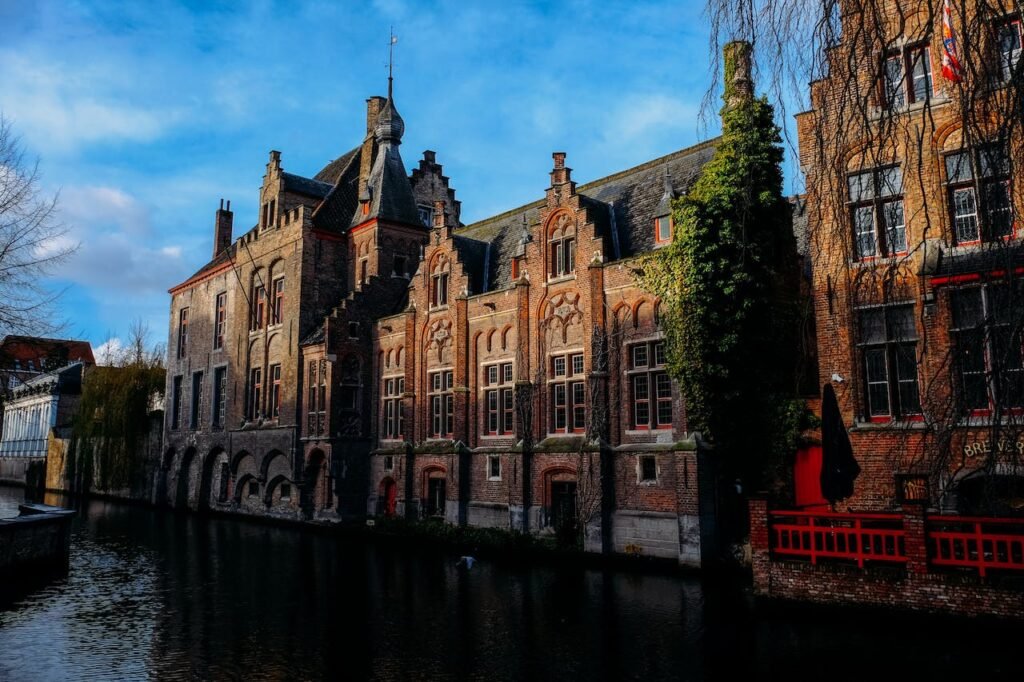Shaping the Built Environment Through Time
Architecture, as a reflection of societal, cultural, and technological changes, has seen the emergence of diverse movements that have left an indelible mark on the built environment. These architectural movements are more than stylistic shifts; they represent profound shifts in ideology, technology, and the way we perceive and interact with the spaces we inhabit. From the grandeur of classical styles to the experimentalism of contemporary architecture, each movement tells a unique story of the human experience.
1. Classical Architecture:
Rooted in the civilizations of ancient Greece and Rome, classical architecture laid the foundation for many architectural movements that followed. The use of classical orders, emphasis on symmetry, and the pursuit of ideal proportions became enduring principles. This movement, with its Doric, Ionic, and Corinthian columns, transcended its origins, influencing styles across centuries and continents.
2. Gothic Architecture:
Emerging in the medieval period, Gothic architecture marked a departure from the classical ideals. Characterized by pointed arches, ribbed vaults, and flying buttresses, Gothic structures like cathedrals sought to inspire awe and convey a sense of the divine. The verticality of Gothic design aimed to elevate the human spirit, embodying the aspirations of the time.
3. Renaissance Architecture:
The Renaissance, a period of renewed interest in classical knowledge and humanism, birthed an architectural movement that celebrated proportion, symmetry, and the revival of classical forms. Architects like Brunelleschi and Palladio looked to the past for inspiration while infusing their designs with a sense of innovation. The result was a harmonious blend of classical principles and a forward-looking spirit.
4. Baroque Architecture:
In response to the challenges of the Reformation, Baroque architecture emerged as a theatrical and emotional response. Ornate detailing, curves, and the dramatic use of light and shadow characterized this movement. Baroque buildings sought to engage the viewer on a visceral level, creating immersive and emotionally charged spaces.

5. Neoclassical Architecture:
As an intellectual movement paralleling the Age of Enlightenment, Neoclassical architecture revisited classical ideals with a rational and restrained approach. Architects like Robert Adam and Jacques-Louis David embraced classical forms but incorporated a sense of order and clarity. Neoclassicism, with its emphasis on reason and logic, became the architectural language of civic buildings and public spaces.
6. Romanticism in Architecture:
During the 19th century, the Romantic movement challenged the orderliness of Neoclassicism. Romantic architecture celebrated individual expression, emotion, and a connection to nature. The Gothic Revival, an offshoot of Romanticism, rekindled interest in medieval forms and craftsmanship, as seen in the works of architects like Augustus Pugin.
7. Arts and Crafts Movement:
Reacting against the industrialization of the 19th century, the Arts and Crafts Movement, led by figures like William Morris and John Ruskin, emphasized craftsmanship and a return to traditional, handmade techniques. This movement laid the groundwork for modern ideas about the integration of art, craft, and daily life.
8. Modernist Architecture:
The early 20th century witnessed the rise of Modernism, a movement that rejected historical ornamentation in favor of functional, minimalist design. Pioneered by architects like Le Corbusier and Walter Gropius, Modernism embraced new materials and construction methods. The mantra “form follows function” became a guiding principle.

9. Postmodern Architecture:
Reacting against the perceived dogmas of Modernism, Postmodern architecture emerged in the late 20th century. Architects like Robert Venturi and Denise Scott Brown questioned the austere aesthetic of Modernism, reintroducing historical references, complexity, and irony into design. Postmodernism celebrated diversity and embraced a more inclusive approach to architectural expression.
10. Sustainable Architecture:
In response to environmental concerns, the 21st century has seen the rise of sustainable architecture. This movement places a strong emphasis on energy efficiency, use of eco-friendly materials, and a holistic approach to design that considers the environmental impact of buildings.
11. Parametric Architecture:
In the digital age, parametric architecture utilizes computational design and algorithms to create complex, adaptive, and often futuristic forms. Architects like Zaha Hadid and Frank Gehry have embraced parametric design, pushing the boundaries of what is possible in terms of shape and structure.
12. Contemporary Vernacular:
In recent years, there has been a growing interest in the adaptation and reinterpretation of traditional forms within contemporary contexts. This movement, often referred to as contemporary vernacular, seeks to reconcile modern living with cultural and contextual influences, fostering a sense of identity and connection.
Conclusion:
Architectural movements serve as milestones in the evolution of the built environment, reflecting the aspirations, values, and technological advancements of their respective eras. From the grand temples of ancient Greece to the sustainable structures of the present day, each movement has contributed to the rich tapestry of architectural history. As we navigate the complexities of the future, the exploration of new movements and the reimagining of existing ones will continue to shape the ways we design and inhabit our world.
